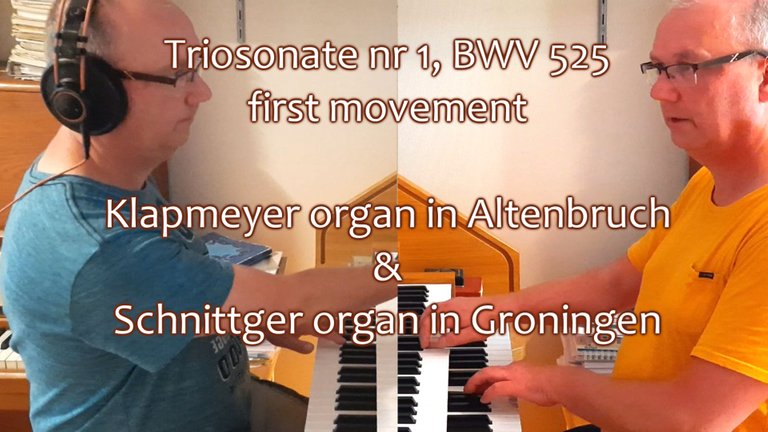
A few weeks ago I played this movement as entry for the Secrets of Organ Playing Contest, run by @organduo. I was not entirely satisfied with that performance as this piece is terribly difficult to get right. Since then I have practised the second and third movement of this sonata, but kept practising this movement as well. And still I can't reliably play it without errors. It takes several takes before I have one without to many (descirnable) errors.
Nevertheless, I wanted to record it again, and decided to play it on two different sample sets. A different organ should lead to different results.
Where most instruments in their evolution became standardised, organs stayed unique instruments. Almost no two instruments are the same, though their can be similarities between organs of the same builder. Some of the village organs of Gottfried Silbermann are strikingly similar. Nevertheless, organs are as different as the churches they reside in.
As each church has a different acoustics an individual organ would sound different when it was relocated to e different church. An important part of organ building is voicing to organ so it sounds good in the acoustics it resides in.
As an organist ons has to be aware of the church, the acoustics the organ sounds in. And different acoustics can lead to a different way of playing a piece.
I play this first movement of Bach's first Triosonata on the sample sets of the Klapmeyer organ in the St. Nikolai church in Altenbruch of the Schittger organ in the St. Martini-kerk, Groningen. Both sample sets were created by Sonus Paradisi (see http://www.sonusparadisi.cz/en/organs/germany/klapmeyer-organ-altenbruch.html and http://www.sonusparadisi.cz/en/organs/netherlands/groningen-st-martini.html). The first one has relatively dry acoustics with a reverb of about 2 second, the second one a far more wet acoustics with a reverb of about 6 to 7 seconds. That maks the first one ideal for playing a Triosonata, and the second one much more difficult.
The individual lines in a Triosonata are all equally important. And each of the three voices should be clearly discernable. And in a church with large acoustics that is far more difficult than in a church with a short reverb. In a church with large acoustics one should play more detached than in a church with dry acoustics, and perhaps even slower to give more time to listen to the individual voices.
Playing this piece in two such different acoustics should therefore lead to quite different playing.
Except, it didn't.
I played the performance on the sample set of the Klapmeyer organ a week ago, and did not listen to it since. Today I played it on the Schnittger organ. I expected that I would have played it slower than on the Klapmeyer organ, yet it turns out both performances are more or less the same length.
Well, so much for theory. Music playing is obviously an intuitive game. One can reason about a sensible approach to a particlar piece on a particular organ, and in the end do something completely different without thinking about it.
Thanks for sharing your creative and inspirational post on HIVE!
This post got curated by our fellow curator @rehan12 and you received a 100% upvote from our non-profit curation service!
Join the official DIYHub community on HIVE and show us more of your amazing work!
Your post has been supported and upvoted from the Classical Music community (Subscribe at peakd and Steempeak) as it appears to be of interest to our community. We also support jazz and folk music posts!
If you enjoy our support of the #classical-music community, please consider a small upvote to help grow the support account!
You can find details about us below.
The classical music community at #classical-music, Peakd, Steempeak and Discord. Follow our community accounts @classical-music and @classical-radio or follow our curation trail (classical-radio) at SteemAuto!